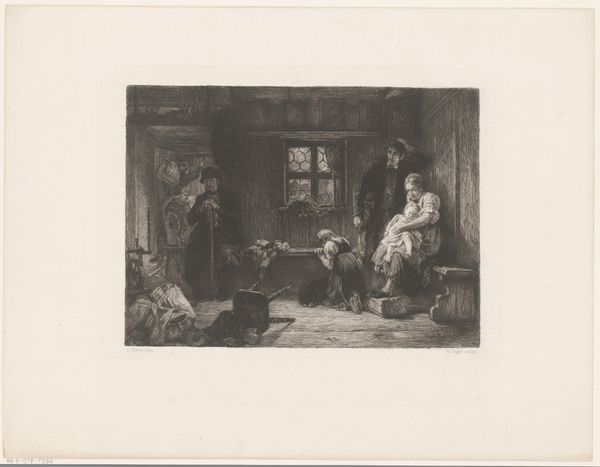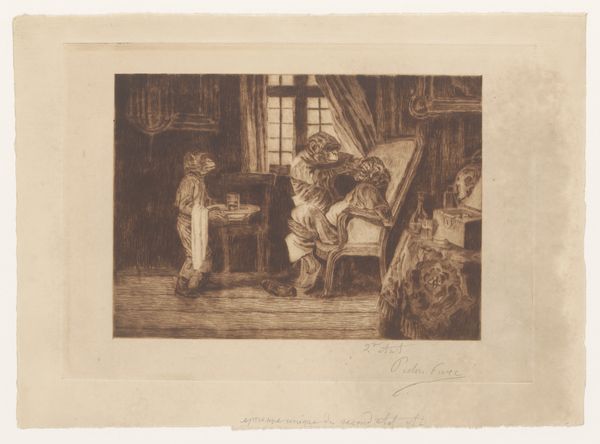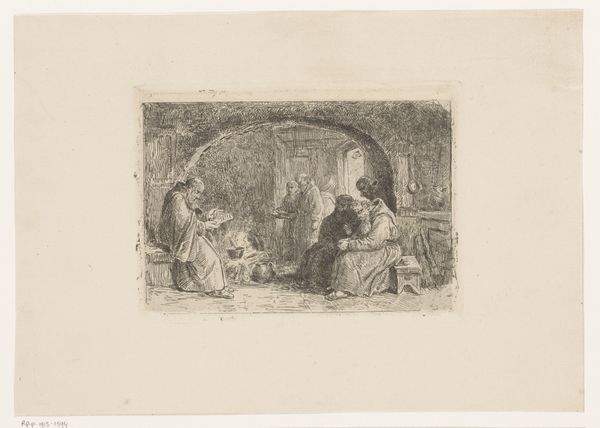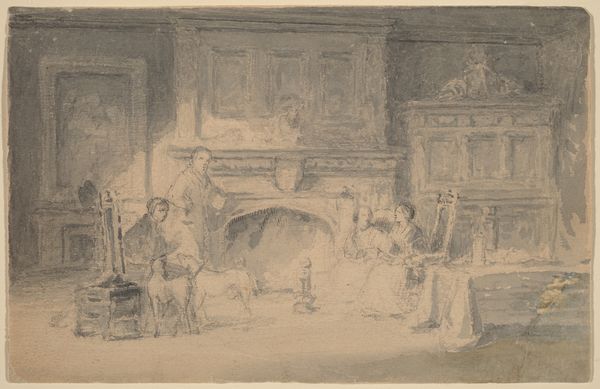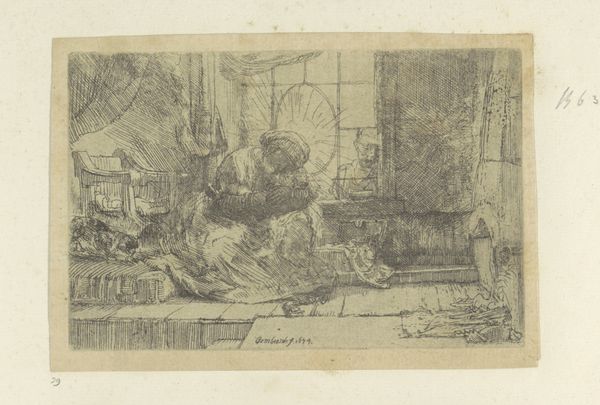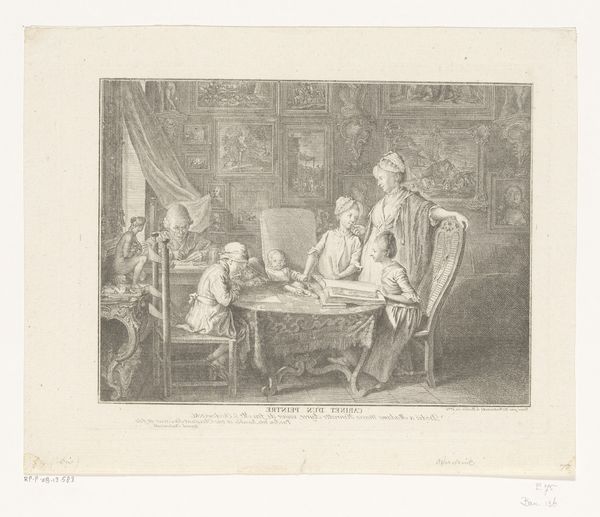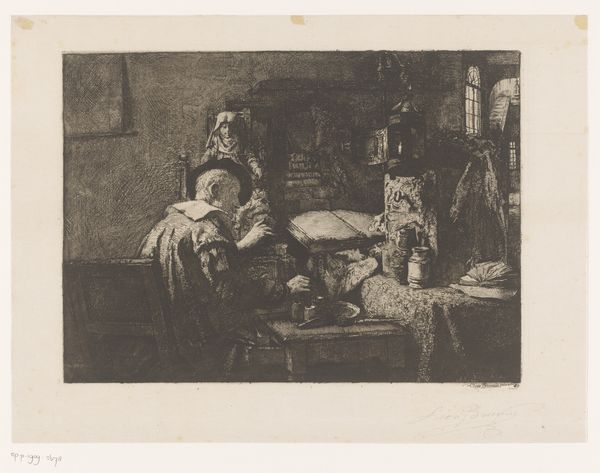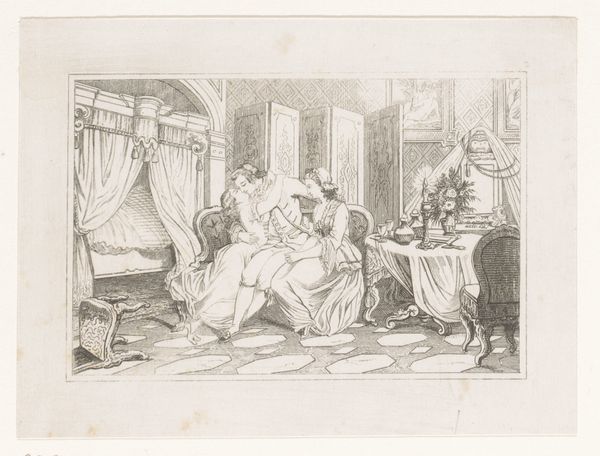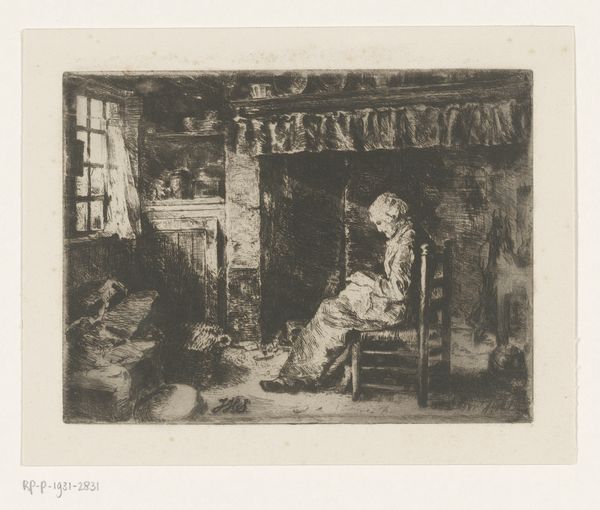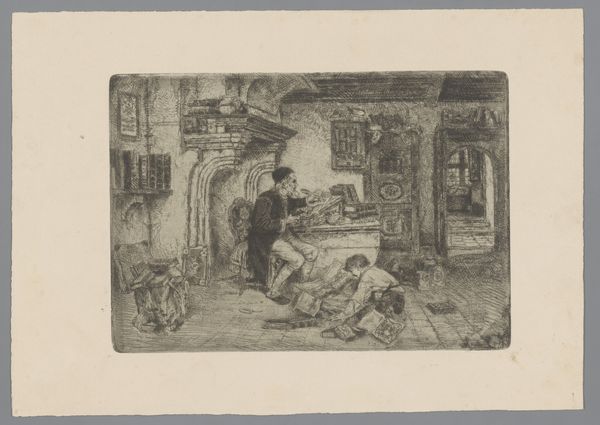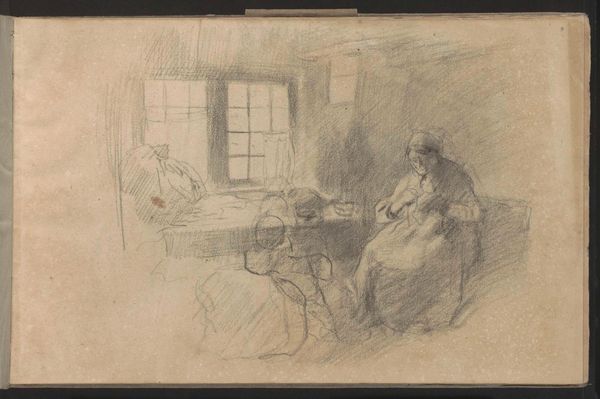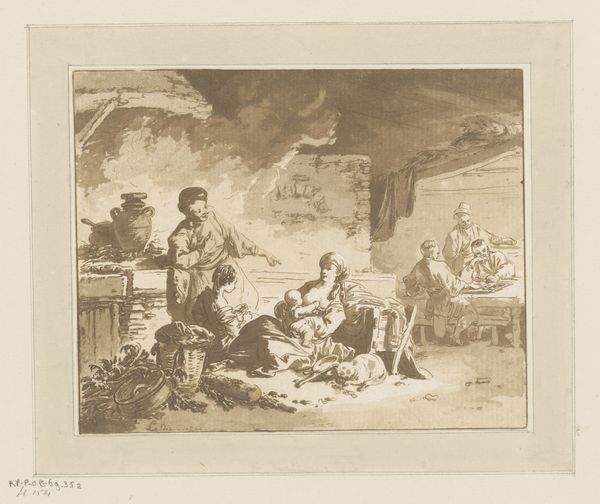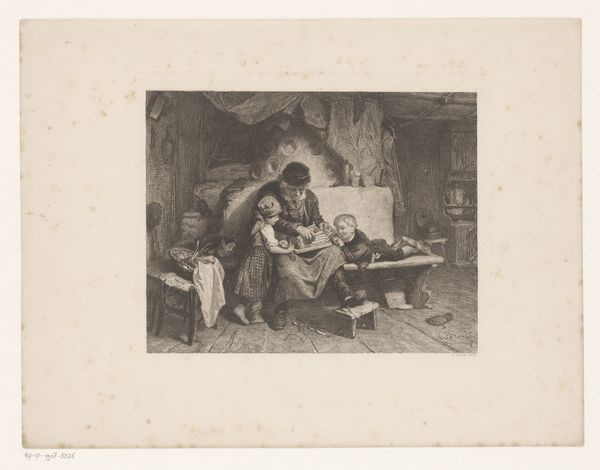
Fotoreproductie van een schilderij met een scène in een interieur 1887 - 1888
0:00
0:00
photography
#
narrative-art
#
impressionism
#
photography
#
genre-painting
Dimensions: height 103 mm, width 136 mm
Copyright: Rijks Museum: Open Domain
Curator: Alright, let's dive into this photogravure. It’s called "Fotoreproductie van een schilderij met een sc\u00e8ne in een interieur", which roughly translates to "Photographic reproduction of a painting with a scene in an interior," created sometime between 1887 and 1888. The artist, Marinus Pieter Filbri, captured not an original work, but a reproduction. Intriguing, isn't it? Editor: Immediately, I'm struck by this almost dreamlike haziness. The sepia tones evoke nostalgia and memory, making the scene feel both intimate and distant. There's something profoundly human and a little sorrowful about the tableau. Curator: Indeed. Note how Filbri uses the photographic process to emulate the softer edges and brushstrokes of Impressionism, even though he's working from an existing image. The scene depicts figures within a dimly lit interior—a domestic genre painting captured through the then relatively new medium of photography. We see several figures engaged in what appears to be a moment of shared emotion, possibly grief. Editor: Exactly! See how the light streams unevenly, almost selectively illuminating some figures while obscuring others? Semiotically speaking, that differential lighting cues our interpretation; the brightest figures gain in importance. Someone cradles a child. A kneeling woman maybe begs forgiveness or weeps? The composition funnels our eye towards those central characters—it is brilliantly staged within the frame. Curator: Filbri takes a painting rooted in tradition and layers the visual language of early photography, resulting in a complex work of reproduction and reinterpretation. It speaks, I think, to photography's nascent understanding of itself as an art form during this period. Is it mimicking painting, honoring it, or staking out its own visual territory? Editor: The tonal range certainly plays up the photograph's "painterly" qualities— it begs for contemplation. I'm just stuck with how much sadness resides in those shifting shadows. So muted. And it’s fascinating how this scene seems preserved and yet ephemeral, a moment already receding into history, captured, duplicated, lost. It brings so much nuance and introspection with every view.
Comments
No comments
Be the first to comment and join the conversation on the ultimate creative platform.
